Backpacking Food Ideas and Meal Planning
A common question I get is what food I pack for an overnight hike. The simple answer is foodstuffs that I enjoy eating and not too much as food is heavy. In stark contrast to my first overnight hike, when I brought along a retoruto kare or boil-in-the-bag curry; a good move, as it turned out. The microwavable instant rice pack, on the other hand, didn’t prove as worthwhile. Not only was it bulky it took 10 minutes of boiling time just to make it somewhat warm. As most folk do, I packed way too much food on that first overnighter. Over the years I have tried to dial in what I bring along for sustenance, finding a balance between maintaining high kcals, nutritional balance, convenience, weight, and taste. And as much as I’d love to tuck into a full nabe each evening, carrying perishables as a solo hiker isn’t very practical. So what options are available?
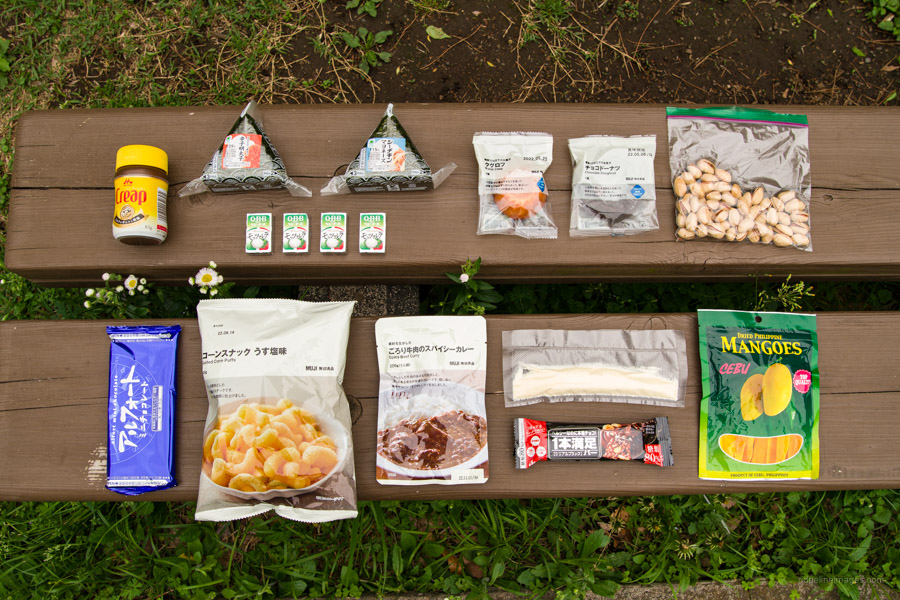
Food for a 1-Night Backpacking Trip.
For shorter 1–2-night backpacking trips I usually pack retoruto meals served with dehydrated rice, mashed potatoes, or couscous but for anything longer I’ll supplement with freeze dried meals. On occasion I’ve been known to tuck into fresh protein – a well wrapped cut of frozen steak when I’ve base camped. On multi-day hikes I like adding some Alcala Minioliva 14 ml (115kcal) single serve extra virgin olive oil to my meals to make them more palatable and calorie dense. Depending on when and where you’re heading it may be possible to avail yourself of a delicious homecooked curry at a mountain lodge.
In reality though unless you’re prepared to go the whole hog and invest in a dehydrator as Hokkaido Wilds did for their epic Daisetsuzan traverse, the range of dried risotto and pasta meals in Japan is limited and low on calories. Typical fare here includes Montbell Curry Risotta (85g / 338kcal), Solleone Express Risotto (80g / 302kcal), MUJI Penne with Mushroom Sauce (90g / 361kcal), Onisi Shrimp Rice Pilaf (77g / 362kcal) and Amano Foods ‘Hatake no Curry‘, Vegetable and Chicken curry (37g / 212kcal). It’s worth noting that companies such as Onisi heavily market towards emergency rations and stockpiles with an emphasis on long shelf life rather than outdoor activities like hiking.
Listed below is what I’ll be bringing along on my upcoming Golden Week overnight hike. Included is lunch, dinner, and breakfast as well as snacks to eat in between those meals. The weight comes to 1010g with a caloric intake of a little over 3,000kcal plenty I feel for the 30 odd hours I’ll be away. Standout items include individually wrapped MUJI doughnuts and cakes cakes that have crazy high kcals for the small size. For emergency I also carry a Calorie Mate block 400kcal. One final tip is to remove all extraneous packaging and seal nuts, snacks, and the like into lightweight Ziploc sandwich bags. It may not sound like much but can save quite a bit of weight and means less rubbish need be carried out later.
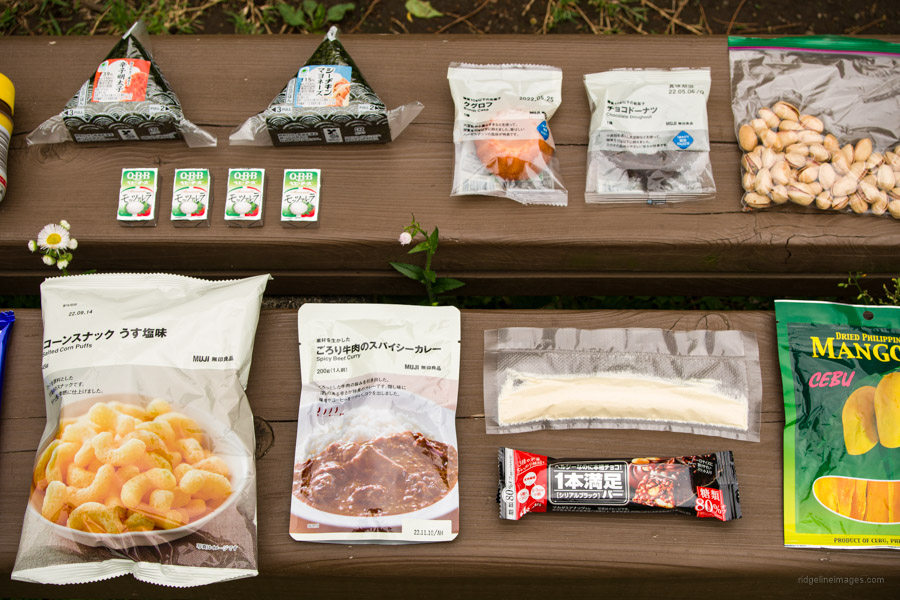
Food for a 1-Night Backpacking Trip in Japan
| Food item | *Weight (g) | Kilocalorie (kcal) |
|---|---|---|
| Asahi protein bar | 41 | 179 |
| MUJI Bundt Cake | 36 | 148 |
| MUJI Chocolate Doughnut | 32 | 141 |
| Muji Spicy Beef Curry | 213 | 500 |
| Dehydrated mashed potatoes | 39 | 141 |
| Tuna Mayo onigiri rice ball | 111 | 233 |
| Spicy Cod Roe onigiri rice ball | 109 | 187 |
| OBB baby cheese | 62 | 192 |
| Dried mangoes | 109 | 336 |
| Pistachios | 70 | 438 |
| Alfort mini chocolate | 66 | 313 |
| MUJI Salted Corn Puffs | 52 | 232 |
| Morinaga Creap creamy powder | 70 | 250 |
| 1010 g | 3290 kcal |
*Weight incl. packaging
.
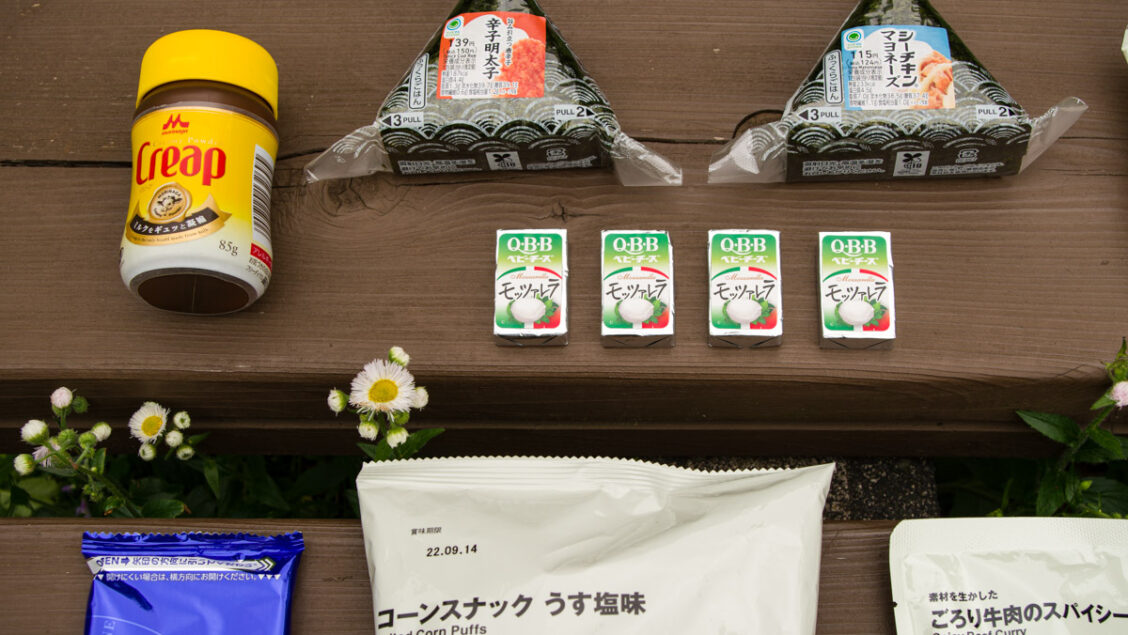
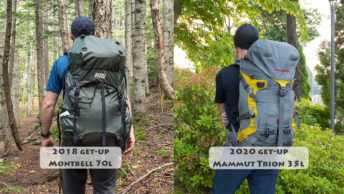
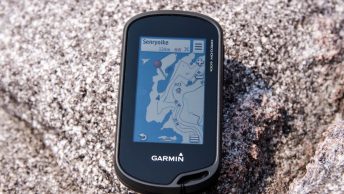
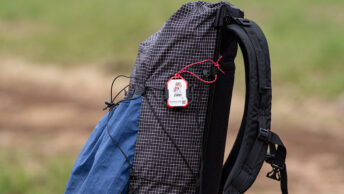
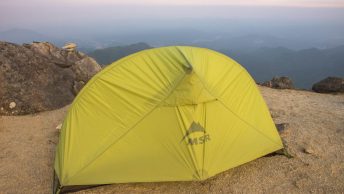
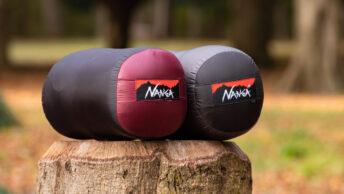

Thanks for sharing ideas on backpacking meals, Dave. I agree the selection in Japan for portable and calorie dense food can feel quite limiting at times. Can I ask, where are you purchasing the dehydrated mashed potatoes? I’m sure they’re readily available, I’ve just not noticed them at my local supermarket.
Some ideas I can share:
– If you’ve not tried before, I find the combination of tortillas, peanut butter, and jam/jelly to be a great option (although love of peanut butter may just be my American-ness showing). For tortillas you can use the unfortunately branded La Corona ones from Kaldi, which have an exceedingly long shelf life.
– The traditional hiking option of bread, cheese (I usually grab a cheap-ish block of Camembert, available everywhere), and salami (usually substituting thin slices of ham).
– Instead of creamer, use milk that’s storable at room temperature (常温保存). I’m not a huge fan of the flavor in comparison to refrigeration-required milk, but it’s a sight better than creamer, at least in my opinion.
Thanks again for the ideas and happy trails!
Thanks for the meal suggestions, Ian. Regarding the instant mashed potatoes, the cheapest and most readily available is Swedish brand Felix Potatismos (235 yen) from Kaldi. It comes in one bag which I then divvy up and vacuum seal. I’ll have to try the tortillas with cheddar cheese and salami a good choice in the shoulder seasons when it’s cooler.
Thank you for the article, David! Looks like I’ll be visiting MUJI before the next hike 🙂
Sharing some of my ideas in no particular order:
I’ve enjoyed one of those powdered chicken & veggies cream soups. Can’t quite remember the vendor but it’s commonly sold I think in both Montbell and 石井スポッツ. Especially in colder months, a hot cup of this soup feels heavenly and works well as a starter while you’re waiting for other meals to rehydrate.
For on the go snacking, snickers bars work pretty well and have slightly higher calorie value than most protein bars I saw. Though could be too sweet for some people.
I’ve also experimented with bringing actual pasta (short type like fusilli, picked the shortest cooking time) and eating it with the boil-in-the-bag sauce from a local supermarket. Unfortunately the taste qualities of the sauce left a lot to be desired, even for hiking conditions.
Quite interesting to see you mention bringing actual steak. Did you pack it with a lot of ice?
I tried bringing some smaller cut yakiniku-style pieces and by dinner time it was visibly off. Perhaps an actual reasonably thick cut piece of steak would’ve survived better.
On some of the previous hikes I’ve got obsessed with reducing the weight to the point of disregarding the taste and variety. A poor decision that you realize as soon as you open a third pack of Montbell Risotto in a row 🙂
Thanks again. It’s great to see this post idea implemented into life and your selection is very insightful!
Some good tips here, Alex. I also bring along the odd snickers (248kcal) when it isn’t going to be too hot. MUJI unsurprisingly also has a good range of soups. I especially like their Korean beef bone soup but only has 25Kcal.
As for the steak, yes definitely get a thick one and ensure its well frozen before you set out – though only really practical to carry in the shoulder seasons. I also like those hamburgers sealed in plastic which can be similarly frozen beforehand and keeps much better.
Lighter foodstuffs are of course better, but as we’ve discovered if isn’t something that you enjoy eating in the comfort of your own home, you’re probably not going to enjoy it on a hiking trip either!
Day/overnighters: I”ll have consumed 1000k by the start of the hike (bus stop/trailhead) Weight therefore irrelevant. (Just carry it in a plastic bag, not in your pack — eat on the go)
200k Acai blueberry shake (My Basket) / 200k Calorie Mate Fruit mix can (Lawson) /
1 banana 90k / Calbee granola single serving 50 g 240k + crushed walnuts 200 k + raisins 60 k (these 3 from Daiso 100yen store) + coconut cream powder 50 k (Hanamasa) = 550k
Fruit = heavy, so eat on way to the hike
After that, I use a dry food system (no stove, no cold soaking, real food) copied shamelessly from Amy & James’ Doing Miles site. https://doingmiles.com/techniques-food/ Cheese (grand padano, red cheddar I get from Hanamasa; wrap in wax paper, 100 yen shop). Crackers from Kaldi : Scandinavian Sigdal w/ seeds + Delser Italian w/ olive oil + rosemary. Dry cured ham, Jamon Serrano (Hanamasa) and Coppa (Ozeki).
The beauty of this system is that it can be brought on a plane, needs no gas (banned on planes) — great if you’re flying to Yakushima, Hokkaido, Nanki Shirahama for the Kumano Kodo.
Andy, thanks for sharing your thoughts. Like yourself heavier and fresher food items I consume earlier in the hike, leaving the lightest stuff till last. I like your idea of bringing Grana Padano cheese and wrapping it in wax paper and will look out for the Sigdal crackers. I have a Hanamasa and Kaldi near where I work. I could see myself using the dry food system for some dinners but probably not all. Don’t think I could cope with not having a tea or coffee in the morning so for a modest weight penalty the stove has to stay. So yeah, I think the way forward at least for myself is a transition to a hybrid dry food system. As for cold soaking, I have never understood the attraction to eating cold, tepid, unappetising mush.
I aim for 100g = 400k. Protein will be under this, good fats over.
I’ll add a bit: crackers: get flavoured (taste embedded–less mess). Kewpie brand single serve mayonnaise packets (long shelf life) – most supermarkets. Afternoons for electrolytes: salted peanuts , powdered pocari sweat (MyBasket). I also eat gummies for texture (so everything isn’t dry) ; these aren’t healthy, but 1 pack = 260k
Extra virgin olive oil (1 tablespoon = 120k!)-repurpose into wide screw bottle (to pour in) w/ dropper flip top (buy in Seira 100 yen store). Dark organic chocolate (MyBasket 100 yen ish). Other stuff: organic Tunisian dates (Kaldi), sprinkle w/ coconut powder wrap in dry ham, then wrap w/ wax paper.
Protein for muscle recovery (afternoon, evenings) : Hagamoro brand tuna packet in olive oil (200k; many supermarkets) . Dry cured ham proscuitto, jamon serrano 60g 180k.
Lunch sometimes: powdered hummus (some but not all Kaldi), olive oil, paprika, mini tomatoes (no need to cut, less mess), carrot stick in wax paper. Hummus made in cut down meat sauce packet- will stand up on its own.
Hybrid works for most people, I agree. I occasionally bring a stove for day trips in spring/ autumn, I have potage soup (MyBasket) and Nestle Milo drink (nice taste, no creamer needed)
Best dry food prep tool / general hiking tool = Victorinox SD Classic, 21 g, loads of them on Mercari jp, as new, about 800 yen (retail about 1600 yen Amazon etc,) Yellow / red best – easier to spot if you leave it behind in camp
https://jp.mercari.com/search?keyword=victorinox%20classic
great article
Arent there any japanese brands with ready made lyophilized food (deep frozen) that have e g both rice/curry amd just need some hot water (something that like those you can buy in europe or in the us)? I saw a lot of products like amano which are deep frozen but they are mostly for home use and usually require to cook base eg rice separately which is not super convenient in the mountains
Cheers Lukasz.
Unfortunately, Japan isn’t great when it comes to freeze-dried foods for outdoor activities. For curry/rice, your best bet is either boil-in-the-bag curry (retoruto kare) with Onisi rice or Nissin Foods curry meal which you just need to add hot water.